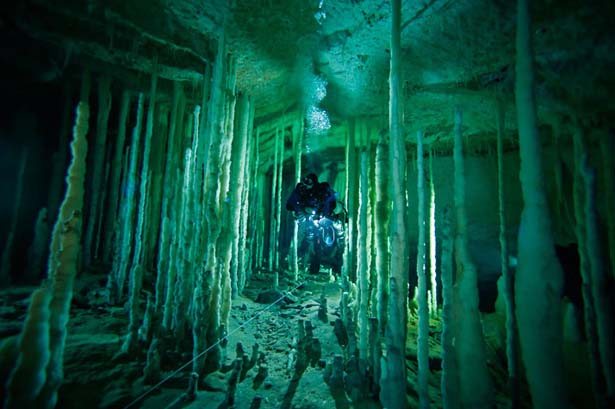A blue hole is a cave (inland) or underwater sinkhole. They are also called vertical caves. There are many different blue holes located around the world, typically in low-lying coastal regions. The best known examples can be found in Belize, the Bahamas, Guam, Australia (in the Great Barrier Reef), and Egypt (in the Red Sea).
 |
| Blue Hole |
Blue holes are roughly circular, steep-walled depressions, and so named for the dramatic contrast between the dark blue, deep waters of their depths and the lighter blue of the shallows around them. Their water circulation is poor, and they are commonly anoxic below a certain depth; this environment is unfavorable for most sea life, but nonetheless can support large numbers of bacteria. The deep blue color is caused by the high transparency of water and bright white carbonate sand. Blue light is the most enduring part of the spectrum; where other parts of the spectrum—red, yellow, and finally green—are absorbed during their path through water, blue light manages to reach the white sand and return back upon reflection.
The deepest blue hole in the world—at 202 metres (663 ft)—is Dean's Blue Hole, located in a bay west of Clarence Town on Long Island, Bahamas. Other blue holes are about half that depth at around 100–120 metres (330–390 ft). The diameter of the top entrance ranges typically from 25–35 metres (82–115 ft) (Dean's Blue Hole) to 300 metres (980 ft) (Great Blue Hole in Belize).
Text source:- Wikipedia. Images are copyrighted by their owners. Found any copyright issue, contact the administrator immediately. Report it now!
You have read this article Australia /
Bahamas /
North America /
Oceania /
Under Water
with the title Blue Hole. You can bookmark this page URL https://tiffanyeatworld.blogspot.com/2011/06/blue-hole.html?m=0. Thanks!



















